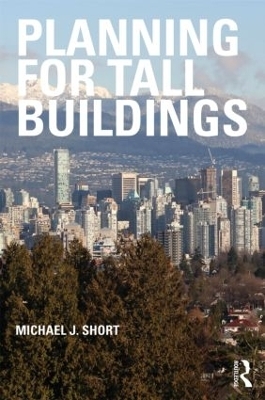
Planning for Tall Buildings
Routledge (Verlag)
978-0-415-58108-0 (ISBN)
This book is a timely contribution to the debate about new tall buildings and their role and effect on our cities. It is divided into two main parts. In part one, the relationship between tall buildings and planning is outlined, followed by an exploration of the impacts that construction of tall buildings can have. It focuses, in particular, on the conservation debates that proposals for new tall buildings raise. The first part ends with an analysis of the way in which planning strategies have evolved to deal with the unique consequences of tall buildings on their urban locations. The second part of the book focuses on seven examples of medium-sized cities dealing with planning and conservation issues, and implications that arise from tall buildings. These have been chosen to reflect a wide range of methods to either encourage or to control tall buildings that cities are deploying. The case studies come from across the western world, covering England (Manchester, Liverpool, Newcastle and Birmingham), Norway (Oslo), Ireland (Dublin) and Canada (Vancouver) and represent a broad spectrum of approaches to dealing with this issue.
In drawing together the experiences of these varied cities, the book contributes to the ongoing debate about the role of the tall building in our cities, their potential impacts, and experiences of those who use and inhabit them. The conclusions outline how cities should approach the strategic planning of tall buildings, as well as how they should deal with the consequences of individual buildings, particularly on the built heritage.
Michael J. Short is a qualified planner (MRTPI) and conservation officer (IHBC) with a BSc (Hons) in Town and Regional Planning from the University of Dundee, an MA in Heritage Management from Sheffield Hallam University, and a PhD in Urban Planning and Conservation from the University of Manchester. Michael currently works as Senior Lecturer in Urban Planning and Conservation at the University of the West of England in Bristol.
Introduction 1. The Tall Building Typology 2. The Potential Impacts of Tall Buildings 3. The Emergence of Planning Frameworks for Tall Buildings 4. The Conservation Challenge of Tall Buildings 5.Tall Buildings in Liverpool: "Balancing Conservation and Change in the Maritime Mercantile City" 6. Tall Buildings in Manchester: "While Liverpool Thinks, Manchester Constructs" 7. Tall Buildings in Birmingham: "The New Image Of the City"? 8. Tall Buildings in Oslo: "The Blue, The Green And City In Between" 9. Tall Buildings in Dublin: Property-Led Regeneration Within An Evolving Conservation Planning Framework 10. Tall Buildings in Newcastle-Upon-Tyne: "Reconciling the Past with the Present?" 11. Tall Buildings in Vancouver: Celebrating ‘The Cult of the View’ 12. Conclusions
| Zusatzinfo | 39 Tables, black and white; 55 Halftones, black and white |
|---|---|
| Verlagsort | London |
| Sprache | englisch |
| Maße | 156 x 234 mm |
| Gewicht | 408 g |
| Themenwelt | Naturwissenschaften ► Biologie ► Ökologie / Naturschutz |
| Naturwissenschaften ► Geowissenschaften ► Geografie / Kartografie | |
| Sozialwissenschaften ► Pädagogik | |
| Technik ► Architektur | |
| Wirtschaft ► Betriebswirtschaft / Management ► Rechnungswesen / Bilanzen | |
| Betriebswirtschaft / Management ► Spezielle Betriebswirtschaftslehre ► Immobilienwirtschaft | |
| ISBN-10 | 0-415-58108-7 / 0415581087 |
| ISBN-13 | 978-0-415-58108-0 / 9780415581080 |
| Zustand | Neuware |
| Haben Sie eine Frage zum Produkt? |
aus dem Bereich


